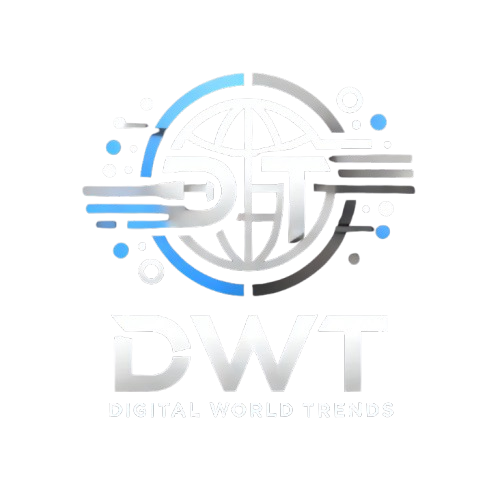Artificial intelligence is revolutionizing industries, from healthcare and finance to entertainment and education. Its potential to improve our world is limitless, but beneath the surface lies a darker side—a side that raises ethical concerns, threatens security, and challenges humanity’s control over technology. While AI offers transformative benefits, it also introduces risks, from privacy violations and weaponized systems to manipulation and even autonomous crime tools. This article dives into the unsettling side of AI, exploring its potential dangers and the steps society must take to prevent it from spiraling out of control.
AI in Criminal Hands: A New Frontier for Cybercrime
One of the most pressing concerns regarding AI is its use by cybercriminals. AI-powered tools like FraudGPT and WormGPT exemplify how AI can be weaponized. These dark counterparts to ethical AI models are specifically designed for malicious activities, such as generating phishing scams, automating fraud, and even crafting ransomware. By providing criminals with the tools to create convincing fake messages, automate attacks, and evade detection, AI significantly lowers the barriers to entry for cybercrime, leading to a potential explosion in online fraud and cyberattacks.
These AI models operate without ethical filters, unlike their regulated counterparts like ChatGPT. As a result, they can generate content that promotes illegal activities, making it easier for non-technical users to conduct cybercrime. According to experts, the ability for AI to carry out cyber attacks autonomously could reshape the cybercrime landscape, demanding that cybersecurity teams develop equally advanced countermeasures.
Privacy Erosion: How AI is Undermining Personal Freedom
AI’s ability to collect, process, and analyze massive amounts of data has led to an unprecedented loss of privacy. From social media and search engines to government surveillance programs, AI systems track, monitor, and predict human behavior with alarming accuracy. In some countries, governments use AI to monitor citizens’ movements, social interactions, and online activity. This surveillance can stifle free expression, create an atmosphere of distrust, and erode civil liberties.
AI-driven surveillance isn’t limited to governments; corporations also use AI to analyze consumer behavior, which often involves collecting personal data without informed consent. Algorithms sift through online activity, personal interests, and even biometric data, often crossing ethical lines. The use of AI in this manner raises concerns about data ownership, consent, and the potential misuse of personal information, as these systems often operate without transparency or accountability.
Deepfakes: Blurring the Line Between Reality and Fiction
Deepfakes, synthetic media generated by AI, highlight one of the most visible and damaging uses of AI in media manipulation. By creating hyper-realistic images, videos, and audio clips of individuals saying or doing things they never did, deepfakes can be used to deceive, defame, and manipulate public perception. From fake celebrity videos to political misinformation, deepfakes pose a significant threat to trust in digital media.
The societal impact of deepfakes is profound. Not only do they make it difficult for people to trust visual information, but they also allow criminals to exploit individuals by creating fake intimate media or impersonating trusted figures for financial fraud. As deepfakes become more accessible and sophisticated, society faces an urgent need to establish legal and technological defenses against this form of digital deception.
Autonomous Weapons and the Militarization of AI
AI’s application in military technology is perhaps its most dangerous aspect, giving rise to a new class of autonomous weapons systems. Known as “killer robots” or lethal autonomous weapon systems (LAWS), these machines can independently identify, target, and eliminate enemies without human intervention. This capability not only changes the nature of warfare but also raises significant ethical and humanitarian concerns. Autonomous weapons, if unchecked, could lead to unintended casualties, human rights abuses, and a destabilizing arms race between countries.
The United Nations and other organizations have called for bans or strict regulations on autonomous weapons. However, the development of AI in military applications is still progressing rapidly, driven by the desire for strategic superiority. The challenge lies in ensuring these technologies are used responsibly and do not become tools for indiscriminate violence.
Bias and Discrimination: When AI Reinforces Inequality
AI systems are only as unbiased as the data they are trained on. Unfortunately, many AI models have been found to reinforce societal biases present in historical data. Algorithms used in hiring, law enforcement, and lending decisions can unfairly favor certain demographics over others, leading to discriminatory outcomes. For example, some predictive policing algorithms have disproportionately targeted minority communities, while hiring algorithms have inadvertently filtered out qualified candidates based on gender or ethnicity.
The issue of bias in AI highlights the risks of using technology in decision-making without a thorough understanding of the underlying data. To avoid reinforcing inequality, AI developers must prioritize fairness and accountability, ensuring that their models do not inadvertently propagate harmful stereotypes or discrimination.
Economic Displacement: Job Losses and the Future of Work
The automation capabilities of AI have led to concerns about massive job displacement. Industries such as manufacturing, retail, customer service, and even professional fields like law and accounting are increasingly adopting AI-powered tools that can perform tasks traditionally done by humans. This shift could lead to a significant transformation in the workforce, with some jobs disappearing altogether.
While AI could create new job opportunities, the transition could be challenging, particularly for workers in low-skill positions. Economic displacement could widen the income gap and lead to social unrest, as those without access to retraining programs may struggle to adapt to the new economy. Governments and industries will need to address these challenges by investing in education and retraining programs that prepare workers for an AI-driven future.
AI and Ethical Dilemmas: Where Do We Draw the Line?
One of the most challenging aspects of AI’s dark side is the ethical dilemmas it introduces. For instance, should AI be allowed to make decisions in critical areas like healthcare or criminal justice? What level of autonomy is acceptable for AI systems? And how do we ensure accountability when AI systems make mistakes or cause harm?
AI operates based on algorithms that lack human understanding, empathy, or moral judgment. When AI systems are given the power to make life-altering decisions, it’s essential to establish ethical guidelines that prioritize human welfare and dignity. Ensuring responsible AI use requires collaboration among governments, corporations, technologists, and ethicists to create a framework for ethical AI deployment.
Countering the Dark Side: The Path Forward
While the risks associated with AI are significant, there are proactive steps society can take to mitigate its dark side:
- Developing Ethical AI Standards: Establishing clear guidelines and regulations for AI development and deployment can prevent misuse. AI ethics boards and government policies must address concerns like privacy, accountability, and fairness.
- Investing in AI Security: Protecting AI systems from hacking, manipulation, and unauthorized use is essential for preventing cybercrime. Organizations should prioritize security measures and consider employing AI-driven solutions to counter AI-based attacks.
- Transparency and Accountability: AI developers must be transparent about how their models work and be held accountable for their outcomes. Open-source development and independent audits can help prevent unethical applications.
- Educating the Public: Awareness is key to minimizing the harmful impact of AI. Educating the public on issues such as data privacy, deepfakes, and AI biases can empower people to make informed decisions and recognize potential threats.
- Fostering AI Collaboration: Governments, private companies, and international organizations should work together to address global AI challenges. Collaborative efforts can lead to consistent regulations and help control AI’s impact across borders.
Final Thoughts: Balancing Innovation with Responsibility
AI has the potential to be a force for unprecedented positive change, but its dark side cannot be ignored. As AI becomes more integrated into society, addressing its risks and ensuring responsible development is essential. Striking a balance between AI’s transformative potential and its ethical challenges will require vigilance, collaboration, and a commitment to safeguarding humanity’s best interests. By taking proactive steps, we can navigate the complexities of AI and ensure it remains a powerful tool for good—rather than a harbinger of unforeseen dangers.
Recommended Resources
- “The Ethics of Artificial Intelligence” – Stanford Encyclopedia of Philosophy
- “AI and the Future of Work” – Harvard Business Review
- “The Impact of AI on Privacy and Surveillance” – World Economic Forum
- “Deepfakes and Synthetic Media” – MIT Technology Review

